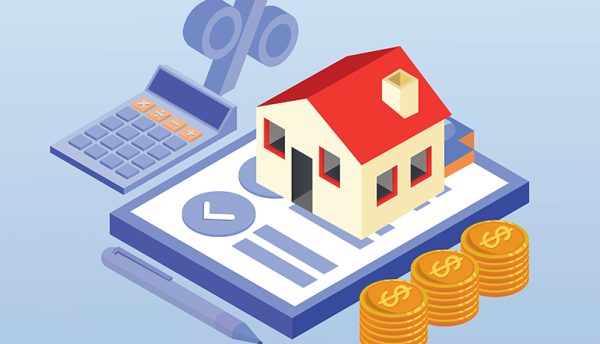This month, I made my terrifying first step onto the property ladder. With the overwhelmingness of solicitors, and estate agents, and asking yourself ‘Can I really afford this?’, I thought I would use this month’s Editor’s Question to see how technology can support the mortgage process.
Rahul Gupta, Director, Lending Services at Acuity Knowledge Partners

The mortgage industry is undergoing a major transformation driven by new-age technology solutions. With technological advancement, the industry is witnessing faster and more efficient loan approvals, thereby enhancing customer experience. The transformation is encouraging for both lenders and borrowers due to higher efficiency, reliability and transparency.
Prior to undergoing the digital transformation, the mortgage industry had to rely on lengthy manual processes, that were complex in nature and highly dependent on numerous physical documents. The process was time-consuming as the lender had to manually scrutinise information given by borrowers. The entire process worked without real-time data and was prone to errors, leading to poor decision-making. A lender had to rely on several assumptions and struggled to assess a borrower’s creditworthiness. Due to the lack of proper assessment, the industry witnessed several delinquencies and defaults, leaving little incentive for lenders. These were the causes of sluggish mortgage volumes, leading to the loss of potential business for the lenders. However, cumbersome manual processes have now been simplified with technology.
Lenders have implemented several digital transformation solutions including the use of data analytics and AI technology, leading to lower human intervention. With automated verification and validation processes, the industry saw a drastic decline in manual review efforts which, in turn, resulted in higher accuracy and faster decision-making. The mortgage industry has seen tremendous growth in mortgage volumes as the laborious process was replaced by real-time data through seamless integration with external data sources. AI-powered algorithms can analyse vast amounts of data related to loan offerings, and assess creditworthiness, employment histories and other pertinent details on a real-time basis.
The implementation of Virtual Reality (VR) and Augmented Reality enabled customers to explore properties remotely, leading to a higher level of convenience. We have also seen the implementation of Blockchain technology improve the overall security and transparency of mortgage transactions, reducing the risk of fraud. Lenders are now offering mobile applications that allow customers to apply for loans, upload documents, and track the status of their applications conveniently.
Lenders now better understand customer needs through the tracking of customer’s behavioural patterns, which helps them offer customised mortgage products and services. Additionally, the integration of a seamless digital process has replaced traditional paper-based signatures, which further allows the customer to sign documents remotely and accelerate the entire mortgage process.
Lastly, digital integration has simplified the entire process and enhanced real-time support services. This has proven to be cost-effective for the lenders as it has reduced overhead costs resulting in improved profitability.
Rajesh Namase, Co-founder and Tech Blogger

Using advanced algorithms and data analytics, automated underwriting systems, for example, quickly evaluate borrower risk. By greatly reducing the need for human underwriting, these tools have sped up the approval process and given borrowers quicker responses.
Additionally, changing how borrowers engage with the mortgage application process are digital mortgage portals. By providing end-to-end online applications, these platforms help borrowers easily fill out forms, upload documents, and monitor the progress of their applications from any device. This degree of digitalisation has raised customer satisfaction levels generally by greatly increasing accessibility and transparency.
My own experience has also demonstrated to me the potential of Machine Learning and Artificial Intelligence (AI) to improve fraud detection and credit risk evaluation. Through the analysis of large datasets and pattern identification, these technologies allow lenders to reduce manual intervention and provide more precise risk evaluations.
Electronic signatures have also made document signing easier and reduced paperwork. Borrowers may electronically sign documents, doing away with the requirement for in-person meetings and paperwork exchange. Customers now have better experiences, and transactions close more quickly as a result of the streamlined closing process.
Application programming interfaces, or APIs, have been essential in my experience, enabling smooth integration between several mortgage systems and outside services. Data interchange and process automation made possible by APIs ultimately improve operational efficiency and allow lenders to provide customised services catered to the demands of each borrower.
My own experience has also brought to light how Blockchain technology might improve mortgage transaction security and transparency. The distributed ledger mechanism of Blockchain lowers the possibility of fraud and mistakes and guarantees data integrity. Contract conditions are automated by smart contracts carried out on Blockchain platforms, which streamline procedures even further and save administrative costs.
My professional experience allows me to vouch for the revolutionary potential of technology in the mortgage sector. These developments, which range from automated underwriting systems to digital mortgage platforms, AI-driven risk assessment, electronic signatures, APIs, Blockchain and beyond, are not only abstract ideas but actual inventions bringing about real change and enhancing the mortgage experience for all parties involved.
Jakub Piotrowski, VP of Product at Bud Financial

Getting a mortgage is a time-consuming and often stressful process. Over the past years, we have seen a few emerging technology-driven improvements that make that more seamless and efficient. Those changes are largely driven by data – both how it is accessed and how it is processed.
With the advent of open banking, it has become much easier to share financial information with trusted parties. While the initial boom was mainly driven by unsecured lending, we see an increasing interest from mortgage providers in this approach. What is effectively happening, is the need to send statements over an email to the lender (or a broker) is being replaced by granting consent for the lender to analyse the account information of the applicant automatically.
And the same process has the potential to replace the initial interview with the broker, which tries to establish initial affordability. While it often is a set of simple questions, few applicants can provide accurate answers to how much they spend when broken down into specific categories – or even what financial products they use. The use of open banking is speeding up the process and makes it far more seamless from the applicant’s point of view.
However, this is only part of the story. What happens with the data is also important. In the traditional process, the lender receives lots of pdf files of varying (mostly poor) quality and has to manually, or at best use some semi-automated way to go through it, looking for some familiar items. This is time-consuming, prone to errors and still limited only to the customary three months of data. With open banking, though, it’s now possible to retrieve standardised transaction data which is far easier to process.
Some providers – such as Bud – have built dedicated tools to analyse this information and provide a clear overview of the applicant’s financial situation. We’re using sophisticated AI models to go far beyond what is possible in a manual process, and we’re able to provide a variety of insights from income and income stability to specific flags tailored to the lender’s process.
All of this happens in seconds rather than in hours, meaning that it’s no longer a week to wait for the decision in principle – it might happen quicker, reducing anxiety on the applicant’s side and enabling the lender to outcompete others.
But the technology goes beyond this, as the data used also helps to better understand the market and continuously adjust how scorecards are built and what are the acceptable levels of risk. Bud helps financial institutions move from transaction-level insights, through customer-level and all the way up to the full understanding of the portfolio. This is ultimately beneficial for all parties involved. The proper use of data and technology speeds up decision processes, enables a better understanding of customers and the outcomes – and makes it easier for the customer to get the financial products they need and can afford.
Click below to share this article

